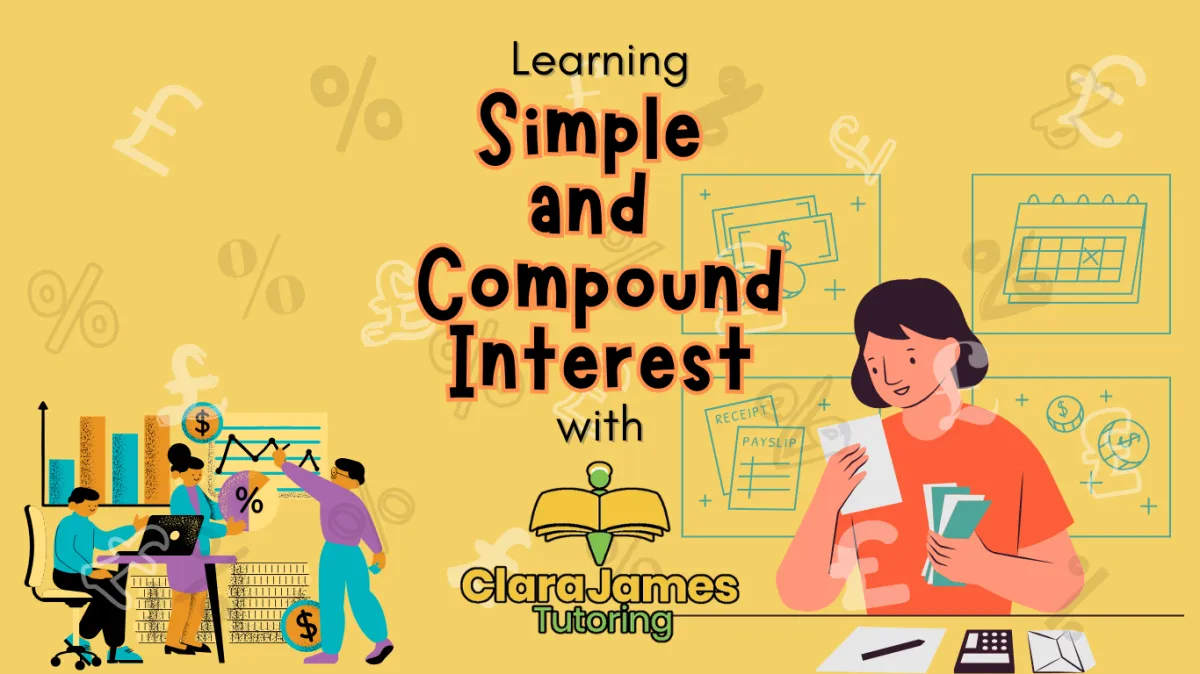Clara James Tutoring
BLOG POSTS

Compound & Simple Interest
Explaining simple and compound interest
In the run up to exams simple and compound interest is something on the list that a couple have asked about, so I thought I’d do a quick recap now.
There are 2 forms:
Simple interest:
Clara invests £300 for 4 years in an account where she will earn 5% simple interest. How much will be in her account at the end of the 4 years?
£300 = 100% of the value
(divide by 100 to find 1%)
£3 = 1%
(multiply £3 by 5 to work out what 5% is)
£15 = 5%
With simple interest, each year they will give her another £15. If she keeps the money in the account for 4 years, they will give her 4x £15 (£60).
If we add this on to her initial investment of £300, we can work out the amount that is in her account at the end of the 4 years:
£300+£60 = £360
The other interest type is Compound interest.
This time the amount of interest is calculated as a percentage of the money that is in the account.
So, if J invests £300 for 4 years in an account where he will earn 5% compound interest. How much will be in his account at the end of the 4 years?
This style just has one basic formula to learn:
£300 x 1. 05^4
We start with the £300 this is the initial investment.
We then multiply by 1: because it is an investment, he will get the initial investment back as well as the additional interest.
The 1 signifies the whole initial investment.
The .05 is the percentage rate.
It is .05 because we are multiplying by just 5% rather than 50%. (If it was 2.5% we would multiply by 1.025)
Finally, the power of 4 represents the 4 years that he will be investing the money for.
If we type this into the calculator we should get the answer: £364.65
So, in this instance J receives a slightly better return on investment than Clara.
That really was a simplified version of interest, but I hope it made sense.

Morning,
I hope the week is going well.
So many people seem to be doing D of E and work experience
at the moment, good luck if that’s you and if you’re at Marlow Camp next
fingers crossed for good weather!
I’ve just finished a lesson on division. It seems to be
something that messes with the brains of so many people.
I found it got easier when I stopped thinking about it as
division and instead thought about it as multiplication. So, if for example I
had the question 396 divided by 3, I would look at it as 3x what = 3. My answer
would be 1. How many times would I need to multiply 3 to get to 9, (my answer
would be 3). Then 3x something = 6. My answer would be 2. Giving me the overall
answer of 132.
I know that’s a really simple example but hopefully it explains
my point.
Thankfully in schools they don’t often seem to need to do
long division, but I’ve worked with a couple of adults (generally nurses for
some reason) who have needed it.
I think I’ll explain this one in a video, as it will be too
complicated to explain it with words as bits get put all over the place. I hope
this makes sense though:
Enjoy the rest of the week and speak soon,
Dawn

